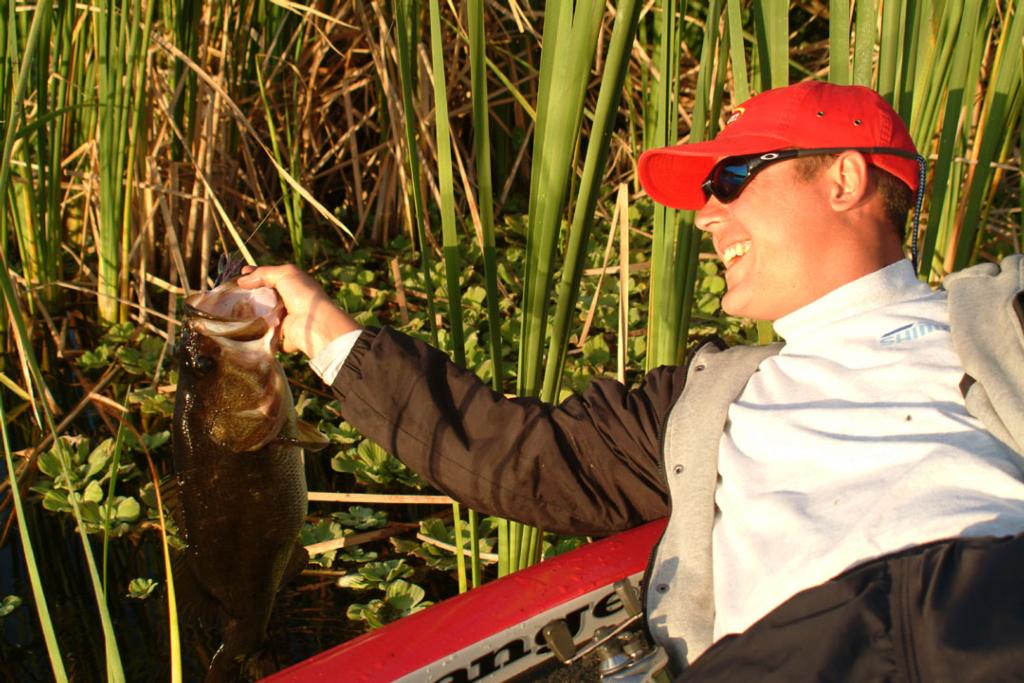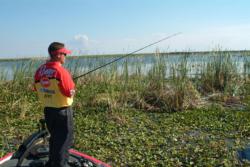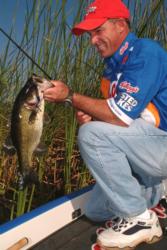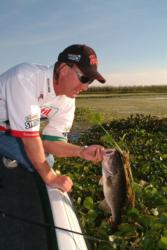Variety of techniques will work at Okeechobee
2004 Wal-Mart FLW Tour season opener to feature many patterns, lots of bass

For the last five years in a row, the Wal-Mart FLW Tour has kicked off the season at Florida’s Lake Okeechobee. Even though it’s always the same place, the Big O dishes out something different for FLW Tour anglers each time.
Whether it’s low water levels, high water levels, extreme cold or a combination of environmental factors, the lake hardly ever fishes the same way two years in a row.
Each time the FLW Tour has visited Okeechobee, predominant fishing techniques have shifted with the conditions. Pitching eelgrass, suspending jerkbaits, crankbaits, sight-fishing and flipping thick mats of vegetation have all been featured on the FLW Outdoors television show as winning patterns on Lake Okeechobee.
This year the fickle lake will write another chapter in the annals of Wal-Mart FLW Tour stops in Clewiston, Fla.
Compared to the last several years, the massive lake has returned to a state of normalcy for the 2004 season opener.
The water level is normal, and clean water can be found around the whole lake. Weather conditions have been stable, allowing bass to flood the clear backwaters with beds.
Anglers are reporting that the vegetation is a bit different this year than last. Some of the vast reed fields in the South Bay area have eroded away, and hydrilla is more prevalent.
“I have never seen a place that changes so drastically from year to year,” commented Tyson pro Todd Ary of Birmingham, Ala. “I’ve been checking my waypoints from last year’s tournament, and the places look completely different. What used to be thick reeds is now open water.”
Last year, in the wake of severe cold fronts that wracked Florida with extremely low temperatures, most FLW Tour pros were dialed into a flipping pattern that entailed dropping plastic craws pinned to heavy 1- to 1 1/2-ounce weights through thick mats of vegetation. With water temperatures in the low 50s, bass were huddled under sun-warmed mats seeking any inkling of heat.
The mat-flipping pattern is still working this year, but, with water temperatures 15 degrees higher than last year, the fish are more scattered in a variety of patterns.
 “When the water is cold, the fish tend to stay put in the mats,” said Ary who finished 20th in the Okeechobee EverStart Series tournament two weeks ago by flipping. “If you get a few bites under one mat, they’ll usually stay there and you can catch them again. But when the water warms up and spawning becomes an issue, bass tend to move from mat to mat and they get less predictable.”
“When the water is cold, the fish tend to stay put in the mats,” said Ary who finished 20th in the Okeechobee EverStart Series tournament two weeks ago by flipping. “If you get a few bites under one mat, they’ll usually stay there and you can catch them again. But when the water warms up and spawning becomes an issue, bass tend to move from mat to mat and they get less predictable.”
Ary has continued to try to make the flipping bite work through the FLW practice, but, with the recent warming trend, he has found it to be unreliable.
“It’s like an every-other-day kind of thing,” he said. “I can get a few bites under a mat one day, but, when I return to that same mat later, they are gone.”
Ary is hoping that an impending cool snap will pull nighttime lows back down into the mid-40s during the tournament and make fish reposition in the mats.
Castrol pro Mike Surman of Boca Raton, Fla., is also hoping for cooler temperatures. Surman is well known for his success with the heavy flipping technique on Okeechobee. He finished seventh in the FLW Tour’s mat-flipping fest last year.
However, he knows that with warmer water and tomorrow’s new moon, his favorite technique will not be the predominant fishing pattern.
“Fish are going to be caught doing a lot different things in a lot of different places,” he said. “Unlike in years past where a majority of the field was doing one thing – like flipping mats or pitching eelgrass – fish are in all phases of the spawn all over the lake. Some are pre-spawn, some are on beds and others have already spawned. So a lot of things are working.”
Indeed, a lot of things are working on the Big O right now. Pros practicing for the event have their boat decks covered with rods and reels.
 A quick perusal of those rods reveals the multitude of baits that are catching fish: top-waters, spinnerbaits, Flappin’ Shads, big weighted craws for flipping thick mats, lighter weighted worms for pitching eelgrass, paddle-tail worms, weightless Senko-style baits, and the list goes on.
A quick perusal of those rods reveals the multitude of baits that are catching fish: top-waters, spinnerbaits, Flappin’ Shads, big weighted craws for flipping thick mats, lighter weighted worms for pitching eelgrass, paddle-tail worms, weightless Senko-style baits, and the list goes on.
One angler with a few more rods on the deck this year is Kellogg’s pro Clark Wendlandt. Wendlandt has made the top-10 cut in three of the previous five visits to the Big O. He thinks fishing a variety of techniques will be required to win the event this year.
“I don’t think a guy can win this tournament committing to one thing all four days,” he said. “I think he is going to need two or three techniques, like spinnerbaits and flipping, or pitching a worm and sight-fishing.”
Okeechobee is producing a lot of fish right now, but the big ones are a little scarce. Pros are catching plenty of 12- to 14-inch fish while fish in the 4-pound-plus class have been rare.
 “The big ones are out there, they’re just real scattered right now,” Surman said. “With the new moon coming on, you can bet that several places will have big females moving in by the truck load. Whoever finds one of those places is going to be a hero.”
“The big ones are out there, they’re just real scattered right now,” Surman said. “With the new moon coming on, you can bet that several places will have big females moving in by the truck load. Whoever finds one of those places is going to be a hero.”
That “hero” will be awarded $100,000 at the final weigh-in at the Clewiston Wal-Mart on Saturday.
Competition for the 2004 Wal-Mart FLW Tour event on Lake Okeechobee begins Wednesday morning at 7 a.m. Eastern time at Roland Martin’s Marina.